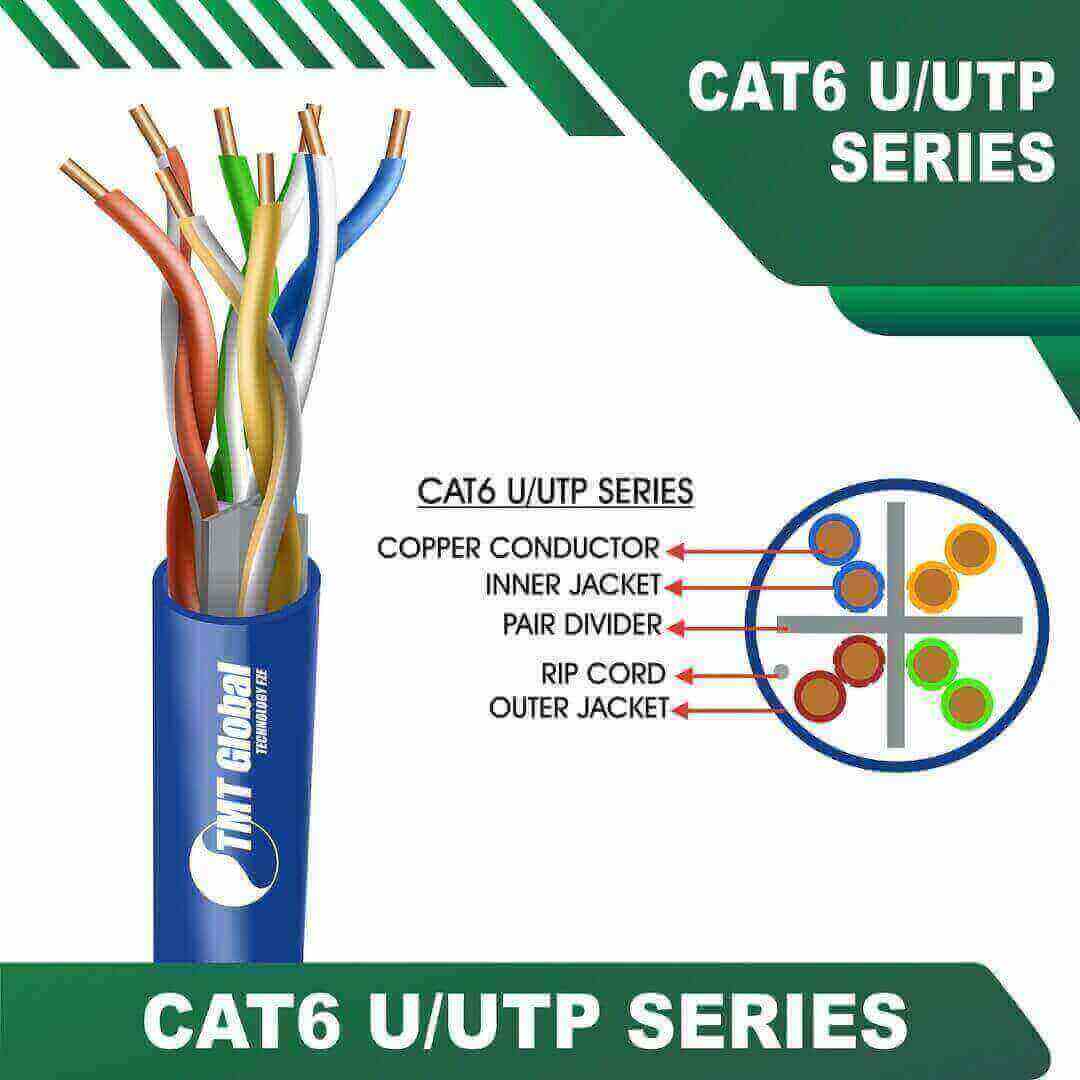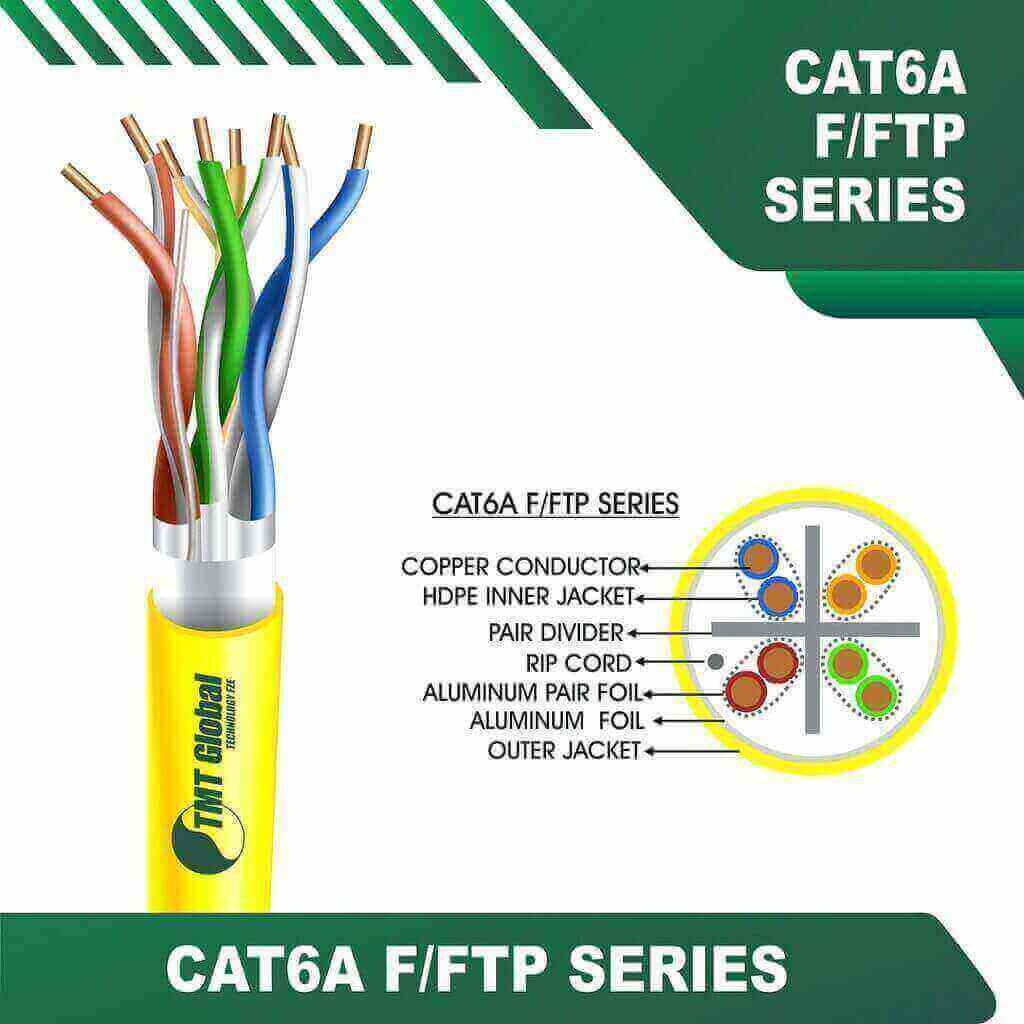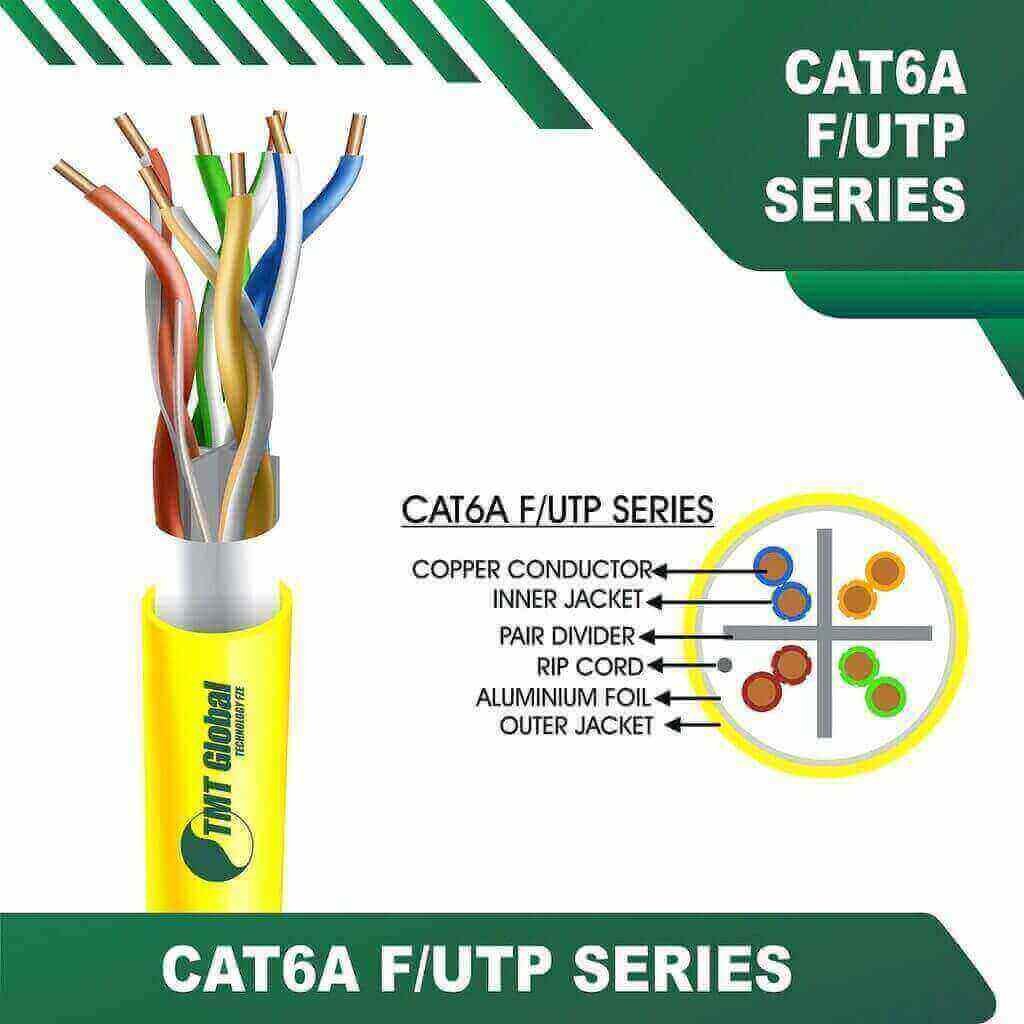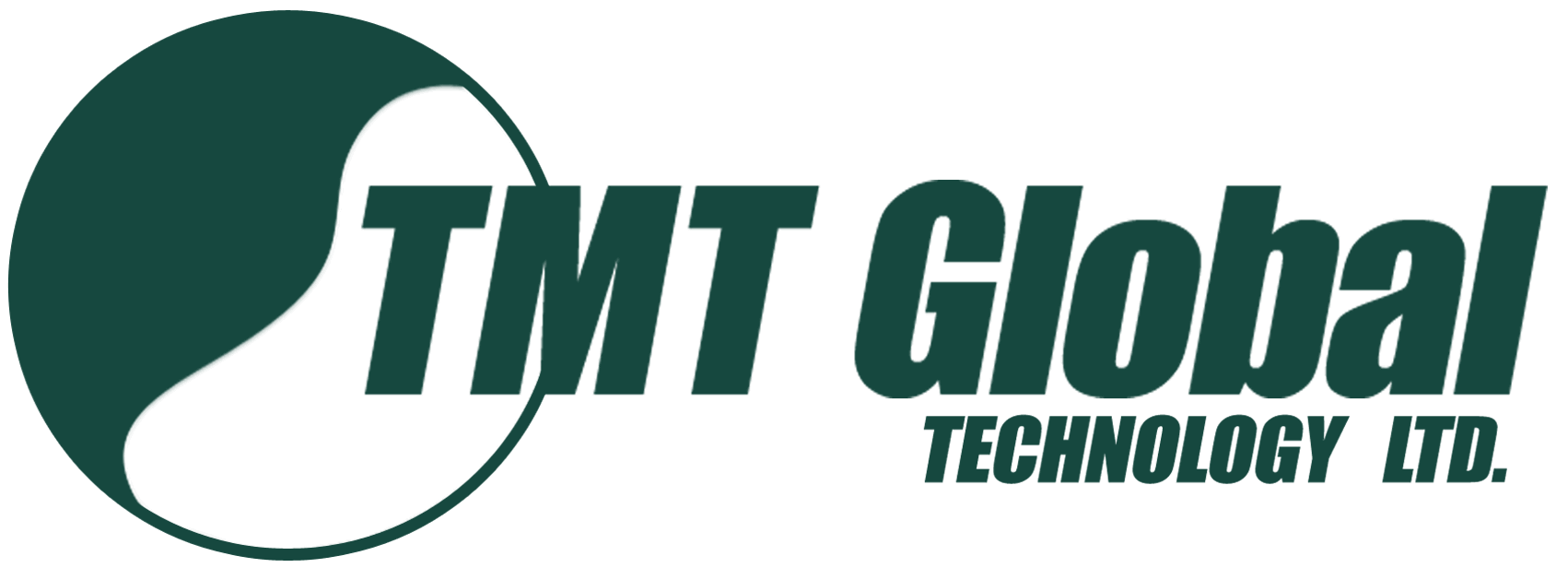Understanding the Differences Between UTP Cat5 vs Cat6 Cables Manufactured by TMT Global Technology Ltd UK

Introduction to UTP Cables
Unshielded Twisted Pair (UTP) cables are a fundamental component of modern networking infrastructure, playing a vital role in the transmission of data. Designed primarily for telecommunications and computer networking, these cables consist of pairs of wires twisted together difference between cat5 cat5e and cat6 to reduce electromagnetic interference. difference of cat5 and cat6 The twisting of the wires helps to maintain the integrity of the signals being transmitted, making UTP cables a preferred choice for various networking applications.UTP Cat5 and Cat6 Cables what’s the UTP Cat5 vs Cat6
UTP cables are constructed with multiple pairs of wires, typically four, allowing for the bundling of multiple communication channels within a single cable. Each pair is colored differently to assist with installation and to ensure proper termination when connecting to network devices. The lack of shielding in UTP cables, cat 5 vs cat 6 while cost-effective, does make them more susceptible to external interference compared to shielded cables. Nonetheless, their lightweight design and flexibility make them convenient for installation in diverse environments.cat5 and cat5e difference
physical difference between cat5 vs cat6
Cat5 cables support data transmission up to 100 Mbps, while Cat6 cables support up to 1 Gbps. Cat5 cables support data transmission up to 100 Mbps, while Cat6 cables support up to 1 Gbps. what is the physical difference between cat5 and cat6 cat5 transmission speed cat5 vs cat6 cable difference between cat 5 and cat 6
Common uses of UTP cables include connecting computers, routers, and switches in local area networks (LANs), as well as telephone systems. They are found in homes, offices, and data centers, where high-speed data transmission is required. UTP cables are available in different categories, such as Cat5, Cat5e, Cat6, and beyond, each categorized based on the level of performance, bandwidth, and supported data rates.cat5e cat5 difference
Choosing the correct type of UTP cable is critical to ensuring efficient network performance. For instance, while Cat5 cables may suffice for basic residential needs, Cat6 cables are recommended cat5 and cat6 network cables market physical difference between cat5 and cat6 for more demanding applications, as they offer higher bandwidth and reduced crosstalk. Therefore, understanding UTP cables’ features and applications is essential for making informed decisions in network design and implementation.utp vs cat6
The Evolution of Ethernet Cables: From Cat5 to Cat6
Ethernet cables have undergone significant evolution since their inception, primarily catering to the growing demands of data transmission technology. The transition from Category 6a (Cat5) to Category 6 (Cat6) represents a pivotal change characterized by advancements in performance and capability. Initially introduced in the mid-1990s, Cat6a cables provided a reliable medium for networks operating at speeds of up to 100 Mbps, making them suitable for environments with moderate bandwidth requirements.
However, as technology progressed, the necessity for faster and more efficient data transfer became apparent. This need led to the development of Category 6a Enhanced (Cat6a) cables, which improved upon the original Cat6a specifications by reducing crosstalk and allowing for gigabit speeds of up to 1000 Mbps. cat6a cat6 network cables market While Cat6a addressed many of the limitations of its predecessor, the emergence of more data-intensive applications prompted further innovation, ultimately resulting in the introduction of Cat6 cables.cat5 or cat5e difference



Cat6 cables marked a notable advancement in Ethernet technology, supporting bandwidths of up to 250 MHz and speeds of 10 Gbps over short distances (up to 55 meters). This improvement was mainly achieved through better insulation and thicker wire pairs, which mitigated interference and crosstalk. The enhanced performance of Cat6 cables makes them suitable for high-speed networks and data centers, where minimizing latency is critical.
In essence, the evolution from Cat6a to Cat6 showcases a broader trend in networking technology, reflecting the ongoing quest for faster and more reliable data transmission. The advancements in cable design and material quality have paved the way for innovations that accommodate contemporary applications. This development serves to illustrate how Ethernet cables have adapted to meet the insatiable demand for speed and efficiency in an increasingly connected world.
Technical Specifications of ethernet cable color code
UTP (Unshielded Twisted Pair) cables are commonly utilized for networking, with the most recognized categories being ethernet cable color code. Both types have distinct technical specifications that make them suited for different applications.ethernet ethernet cable color code
The Cat6a cable, which is primarily designed for Ethernet networks, supports maximum data rates of up to 100 Mbps (megabits per second), operating efficiently over a bandwidth of 100 MHz. Its construction includes four pairs of twisted copper wires, which help in minimizing cross-talk and electromagnetic interference. Cat6a cables are commonly used in less demanding applications such as basic internet connections, telephony, and interconnecting small networks.
cat5 cat6 network cables market
The global network cables market is expected to grow at a CAGR of 6.2% from 2022 to 2030, reaching $16.5 billion.cat5 versus cat6
On the other hand, Cat6 cables represent an advancement in technology, with capabilities that significantly surpass those of Cat5 cables. Cat6 supports data rates of up to 1 Gbps (gigabit per second), with a maximum bandwidth of 250 MHz. The construction of Cat6 cables includes tighter twists and additional insulation that further reduce crosstalk, enhancing signal quality. This improvement enables Cat6 cables to perform optimally in high-speed network environments, such as data centers and large enterprises that require greater data bandwidth and reduced latency.
Each cable type exhibits different performance metrics under various environmental conditions. While both can function in standard indoor environments, Cat6 is more adept at handling external interference, making it more suitable for setups involving heavy machinery or electronic devices. Additionally, the installation distance where they maintain their effectiveness varies; Cat5 can typically run up to 100 meters effectively, while Cat6 may face performance degradation beyond 55 meters, particularly at higher data rates.
In conclusion, the choice between UTP Cat5 and Cat6 cables will largely depend on the specific networking requirements. Cat5 may suffice for basic needs, while enterprises with higher data demands should consider investing in Cat6 for optimal performance.
Performance Comparison: ethernet cable color code
The performance characteristics of networking cables are crucial when selecting the appropriate cable for various applications. Two of the most commonly used cables are Cat5 and Cat6, each with distinct specifications and benefits. The first notable difference between these two types lies in their transmission speeds. Cat5 cables can support speeds of up to 100 Mbps, which may suffice for basic networking tasks. In contrast, Cat6 cables can achieve speeds of up to 10 Gbps over short distances, making them more suitable for high-speed internet activities, including gaming, streaming, and large file transfers.ethernet cable color code difference
Another essential factor to consider is the frequency capability of these cables. Cat5 cables operate at a frequency of 100 MHz, limiting their ability to handle higher bandwidth applications. Conversely, Cat6 cables can function at frequencies up to 250 MHz, which not only enhances their speed potential but also allows them to manage multiple data streams simultaneously without compromising performance. This frequency advantage makes Cat6 cables a more future-proof choice as digital demands continue to rise.
When reviewing the range of both cable types, Cat5 cables are typically effective up to 100 meters for optimal performance, while Cat6 cables preserve high data integrity up to approximately 55 meters when used at their maximum speed. Beyond this distance, performance can diminish, highlighting the importance of selecting the appropriate type based on networking infrastructure longevity.what’s the difference between cat5 and cat6 cable
Furthermore, Cat6 cables have a superior design that helps reduce interference and crosstalk, which happens when signals from one cable interfere with those of another. Enhanced shielding in Cat6 cables provides greater resistance to external noise, making them a favorable option for environments with potential electromagnetic interference. This performance comparison clearly illustrates that while both Cat5 and Cat6 cables have their particular advantages, Cat6 emerges as the more capable choice for modern networking needs.difference between cat5 and cat6 ethernet cables
Installation Considerations for UTP ethernet cable color code
TMT Global Technology Ltd is a reputable player in the structured cabling systems market, offering a diverse range of products designed to meet the evolving demands of connectivity solutions. Among their extensive product lineup are high-performance copper and fiber optic cables, essential components for modern networking infrastructures. These cables are engineered to support various applications, ensuring optimal data transfer rates and reliability.ethernet crossover cable color code
One of the notable products from TMT Global is their category-rated copper cables, which are tailored for both residential and commercial use. These cables stand out due to their superior shielding technology, which significantly reduces electromagnetic interference, thereby enhancing the overall performance of the network. Additionally, TMT’s fiber optic cables utilize cutting-edge materials that provide exceptional bandwidth capabilities, making them ideal for high-density environments.cat 5 vs cat 5e vs cat 6
In addition to cables, TMT Global Technology Ltd also offers an array of connectivity solutions. Their patch panels and keystone jacks optimize system organization and management, allowing for seamless connectivity across various devices. These components are designed with user ease in mind, promoting quick installations and maintenance, which is crucial for businesses that prioritize uptime in their operations.
Moreover, it is advisable to adhere to local regulations and guidelines related to cabling installations to avoid compliance issues. Use structured cabling resources, such as racks and patch panels, to create manageable and organized connections. Labeling cables clearly during installation can significantly ease troubleshooting and future modifications.
Improper installation may lead to significant performance degradation, particularly for Cat6 cables, which are more sensitive to installation errors. By taking these installation considerations into account, one can maximize the efficiency and reliability of the network, ensuring that both UTP Cat5 and Cat6 cables perform optimally in their intended environments.
Applications of UTP Cat5 and Cat6 Cables
UTP Cat5 and Cat6 cables serve various purposes across home and commercial settings, with distinct capabilities that cater to different networking needs. Understanding their applications is essential to selecting the appropriate cable for specific environments.
In residential settings, Cat5 cables are commonly employed for tasks such as Internet access, enabling users to connect devices like computers, printers, and gaming consoles to their home network. Due to their maximum data transmission speed of 100 Mbps over distances of up to 100 meters, Cat5 cables are suitable for basic networking tasks but may not suffice for high-bandwidth applications.
On the other hand, Cat6 cables offer advanced data transmission speeds of up to 10 Gbps, making them suitable for more demanding applications. This capability is particularly advantageous for home offices, where multiple high-speed devices are often used simultaneously. Today, many households are upgrading to Cat6 cabling to accommodate smart home technologies and streaming services, aiming for enhanced performance and reliability.
In enterprise environments, the choice between Cat5 and Cat6 becomes even more crucial. Businesses typically leverage Cat6 cables for comprehensive network setups, especially for servers, data centers, and systems that require high-speed internet connectivity. With greater bandwidth capacity, these cables support VoIP phones, video conferencing systems, and extensive data transfer, thus ensuring seamless operation across various applications.network cable termination color code
Another prominent application of both cable types is in CCTV systems, where reliable data transmission is paramount. Cat5 cables can be used for analog cameras, while Cat6 is favored for IP cameras due to its ability to handle higher data loads and distances, which provides better video quality and reliability.network cabling color code
Ultimately, understanding the applications of UTP Cat5 and Cat6 cables enables users to make informed decisions, ensuring optimal performance for their networking needs in both residential and commercial contexts.transmission speed of cat5
TMT Global Technology Ltd UK: A Trusted Manufacturer
TConnectors play a crucial role in structured cabling systems by enabling the physical connection between different networking devices. They ensure seamless integration and communication among various components, such as routers, switches, and servers. Patch panels, functioning as a centralized point of connection, provide flexibility in managing and reorganizing network connections, accommodating changes and expansions with minimal disruption.
Overall, structured cabling systems are designed to be scalable and adaptable, capable of supporting a wide range of technologies and applications. Their design not only enhances performance but also simplifies network management, making them an indispensable part of modern telecommunications infrastructure. By integrating these elements, organizations can optimize their connectivity solutions, ultimately improving operational efficiency and information exchange across all levels of their operations.
cat5 v cat6
In summary, TMT Global Technology Ltd UK stands as a trusted manufacturer in the networking industry, particularly known for its high-quality UTP Cat5 and Cat6 cables. Their commitment to quality, innovation, and customer satisfaction has cemented their reputation as a leading provider of reliable networking solutions.
Cost Considerations: Cat5 vs Cat6
Furthermore, TMT Global Technology Ltd is driven by the vision of advancing global connectivity. The company aims to bridge gaps in communication by facilitating better network performance through its structured cabling systems. Its dedication to research and development underlines its commitment to offering innovative solutions that not only enhance productivity but also adapt to future technological trends. As a manufacturer, TMT Global Technology Ltd places significant emphasis on quality assurance, recognizing that the reliability of cabling systems directly impacts overall network efficacy.
In summary, the establishment of TMT Global Technology Ltd marks a significant entry into the structured cabling systems market, characterized by a commitment to innovation, quality service, and a vision for improved global connectivity.
Moreover, the production processes for Cat6 cables tend to be more intricate. The necessity for tighter specifications and better performance in data transmission leads manufacturers to invest more in quality control and testing. This increase in production complexity can further elevate the overall cost of Cat6 cables compared to Cat5. Furthermore, the trend towards higher bandwidth requirements in modern networking applications has increased the demand for Cat6 cables, driving their prices upward.
When evaluating whether to opt for Cat5 or Cat6, it is also essential to consider the long-term benefits versus initial cost. While Cat5 may present a lower immediate financial outlay, Cat6 offers superior performance which can be crucial for businesses or technology users reliant upon high-speed internet and seamless data transmission. Ultimately, the decision should reflect individual needs and future networking plans, ensuring that the investment aligns with anticipated technology advancements.
Conclusion
When it comes to choosing between UTP Cat5 and Cat6 cables manufactured by TMT Global Technology Ltd UK, it is essential to consider various factors that align with your specific needs and circumstances. Throughout this discussion, we have highlighted the primary distinctions between these two cable types. Cat5 cables, while suitable for basic networking needs, may not meet the demands of more data-intensive applications that are becoming increasingly common today. On the other hand, Cat6 cables offer superior bandwidth and improved performance, making them a more future-proof option for potential technological advancements .what is the difference cat5 and cat6
TMT Global Technology Ltd was established with a clear mission to redefine the landscape of structured cabling systems. Founded by a team of industry professionals, the company has quickly positioned itself as a key player in the realm of connectivity solutions. The founders envisioned a company that not only prioritizes high-quality products but also expresses a commitment to innovation and exceptional service delivery. With the increasing demand for efficient and reliable connectivity, TMT Global Technology Ltd is keenly focused on addressing the challenges faced by modern infrastructure.
The company’s primary motivation for entering the structured cabling systems market stems from recognizing the critical role that robust cabling solutions play in enhancing communication capabilities. In an age where connectivity is paramount, TMT Global Technology Ltd seeks to provide businesses and organizations with reliable, scalable solutions that foster seamless network connectivity. They emphasize a proactive approach to product development, ensuring that their offerings meet the evolving needs of various sectors, including telecommunications, data centers, and commercial enterprises.
